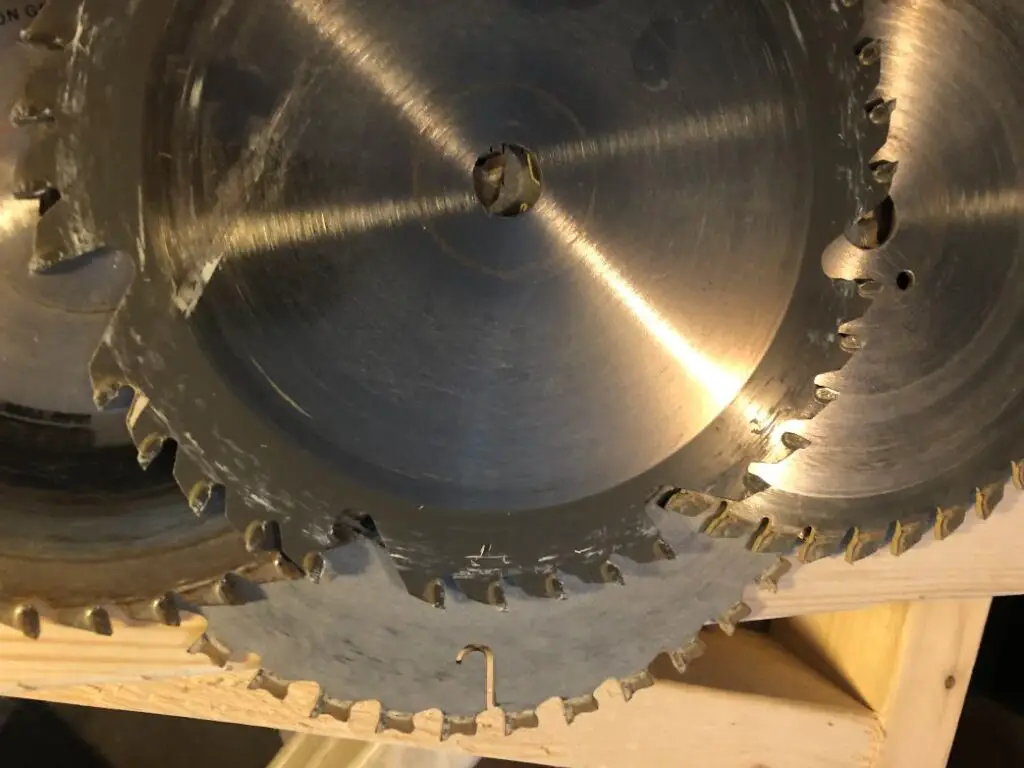There are numerous reasons why you may need to make a miter cut, and as a novice woodworker, you may not have a miter saw at your disposal. This leaves a question: Can you make a miter cut with a circular saw?
The short answer is yes! Doing a rough miter cut with a circular saw is fairly simple and quick. While it won’t beat the precision of a miter saw, using a jig or a system to make repeated cuts, miter cuts with a circular saw are no problem.
What Is a Miter Cut?
Let’s back up a little bit! Before you can learn to cut one, you have to know what a miter cut is, right? A miter cut is any cut that is not at a 90-degree angle.
You may want to make a miter cut when assembling a box without wanting any end grain exposed on the corner, or when making a picture frame. These are also common cuts when adding perimeter to a deck.
Making Miter Cuts With a Circular Saw
The saw has adjustments with angles typically from 0 to 45 degrees, with 0 degrees being your typical square cut.
Turn the knob (or lever) to unlock the adjustment, move the saw body and blade relative to the base to the appropriate angle on the saw’s gauge. Then you will tighten the knob (or lever) to lock it down in place once again.
With this adjustment, you can proceed to make your cuts in the same manner you would if you wanted them square. Your cuts should now be at your desired angle.
Remember that your cut location on the top of the board will be different than on the bottom of the board due to the angle.
Make sure you keep this in mind when you are marking the locations for your cuts, as it is very easy to accidentally cut your angle in the wrong orientation and potentially waste an entire board by cutting it too short.
Pro Tip:
You can use a circular to miter cut trim like baseboards or quarter rounds in a pinch, however, since a circular saw is less accurate than a dedicated compound miter saw you should plan to caulk the joints afterward.
Using a Circular Saw Miter Guide
A carpenter’s speed square can be used as a circular saw miter guide if you don’t trust your freehand cutting skills.
A speed square is an inexpensive tool found at any hardware store or home center. (They are sometimes called framing squares or roofing squares.)
You may already be using it to easily guide your saw for straight 90 degree cuts on any board!
However, if you want to cut at an angle—or even make a compound mitered cut with the blade angled—you can rotate the speed square on its pivot point and use the markings on the square itself to determine the angle of cut.
Then, you will use the speed square as a guide as you normally would.
You can check out Milwaukee’s selection of circular saw accessories here.
Using a Circular Saw Miter Jig
If you plan on regularly making the same angle of cut, or regularly cutting long lengths along a piece of plywood, it may be worth your while to make a circular saw miter jig, such as a circular saw track.
This is a more involved process than simply using a guide, but will save you hundreds of dollars compared to buying a track saw.
All you need is a few scraps of plywood with at least one piece that has a known straight edge.
Attach the piece of plywood with the straight edge, which will become the top of the track, on top of a larger piece, which will become your track’s bottom.
You will need to make sure that it is offset by least the difference between the blade and the edge of the saw base.
Then, adjust your saw blade’s angle to the desired miter angle.
You will make your cut riding the saw along the straight edge of the top piece to finish making the track.
The edge that was cut is now a reference line to match up on your project, taking the guesswork out of following a line freehand.
Here’s a great video walking you through how you can build your own miter jig for your circular saw:
Safe Miter Cuts With A Circular Saw
Unfortunately, the circular saw can be one of the most dangerous tools in a woodworker’s shop. The blade on a circular saw spins faster than a table saw, and accidents with the circular saw can be very severe.
One of the most common mistakes that leads to accidents is binding the saw’s blade in a cut.
When this happens, the saw will jump back toward the woodworker resulting in sometimes very severe injuries. This is called kickback.
This usually happens when a woodworker is attempting to cut a large piece of plywood or a long board without proper support.
To prevent the circular saw from binding, the woodworker should make sure that the piece that is being cut off is free to drop or move away.

